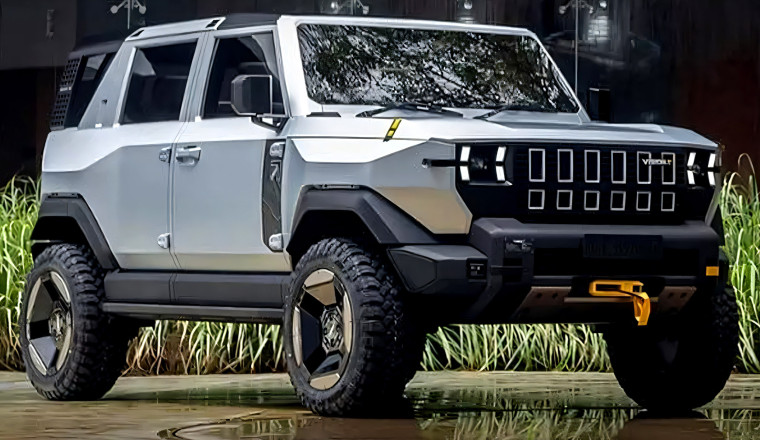
by Thanos Pappas
- Mahindra has introduced four concepts in India, previewing production SUVs for 2027.
- Vision.T SUV and Vision.SXT pickup evoke Jeep Wrangler vibes with rugged, boxy styling.
- Concepts ride on brand’s NU_IQ platform supporting ICE, hybrid, and electric powertrains.
The launches of glitzy supercars and high-dollar restomods at Monterey Car Week may have dominated headlines, but a different kind of automotive show unfolded thousands of miles away. In India, Mahindra used a special event to showcase four new concept vehicles, each serving as a glimpse of production models slated for 2027.
More: Mahindra Built A Batman SUV And Somehow It’s Completely Serious
At the center of the lineup are the Vision.T off-roader and Vision.SXT pickup, both looking like futuristic interpretations of a Jeep Wrangler. They’re joined by two more SUVs, the sporty Vision.X and the more rugged Vision.S, giving Mahindra a wide spectrum of designs aimed at future buyers.
The concepts were designed in Mahindra’s Global Design studios in Mumbai, India, and Banbury, UK, adopting the automaker’s Heartcore styling language. Underneath, they sit on the new NU_IQ platform, a flexible architecture designed for gasoline, diesel, hybrid, and fully electric powertrains in both front- and all-wheel-drive layouts.
Built for Global Reach
The NU_IQ platform isn’t just versatile in terms of propulsion. It also supports both left- and right-hand drive setups, an essential feature for export ambitions. Mahindra says the platform will underpin SUVs ranging from 3,990 to 4,320 millimeters in length (157.1 to 170.1 inches), with a 2,610-millimeter (102.8-inch) wheelbase.
The company claims that the new underpinnings enable a commanding seating position, a spacious cabin with “class-leading” boot space, a flat floor (even on the ICE versions), a lightweight construction, and advanced safety.
The Indian Wranglers
The Mahindra Vision.T and .SXT concepts are an evolution of the Thar.e from 2023. However, they look a lot closer to production status, giving us a preview of the models that will eventually expand Mahindra’s model family next to the existing Thar and Thar Roxx.
More: Mahindra BE 6e (Get It?) And XEV 9e Electric Coupe SUVs Debut With Futuristic Looks
The concepts have sharp grilles with LED headlights, boxy fenders, off-road bumpers, and an upright stance. Both are fitted with all-terrain tires and have a generous ground clearance. The main difference is that the Vision.T has a five-door SUV bodystyle while the Vision.SXT is a four-door derivative with an exposed cargo area. The small bed carries two full-size spare wheels secured behind a custom tailgate.
Inside, the two concepts share a five-seat layout highlighted by a tall portrait-oriented touchscreen running the center console, a digital instrument cluster, and a panel of overhead switches for added functionality.
Compact and Rugged Concepts
Moving on to the other SUV concepts, the Vision.S looks like a baby Land Rover Defender with fancy LEDs and off-road gear. It also has a rugged stance and could evolve into the smallest member of the Mahindra Scoprio family.
Boxy proportions, high ground clearance, and short overhangs give the SUV a rugged, go-anywhere stance despite its compact size. The look is reinforced by details such as roof-mounted LEDs, a roof rack, a small side ladder, and a rear-mounted spare wheel carrier. Inside, two digital displays are split by central air vents, complemented by more physical controls than typically seen in Indian concept vehicles.
More: JLR’s Parent Company Made An Electric SUV With Drift Mode For Just $25K
The final reveal, the Vision.X, is the most athletic of the lineup. With slim LED lighting, sculpted surfaces, and contrasting glossy black accents over matte bodywork, it brings a sportier character. Inside, the curved digital cockpit and two-spoke steering wheel suggest where Mahindra’s design language could be heading for its XUV and XEV families.
Mahindra plans to bring production versions of these concepts to market starting in 2027. The rollout is expected to begin in India before spreading to export markets.














